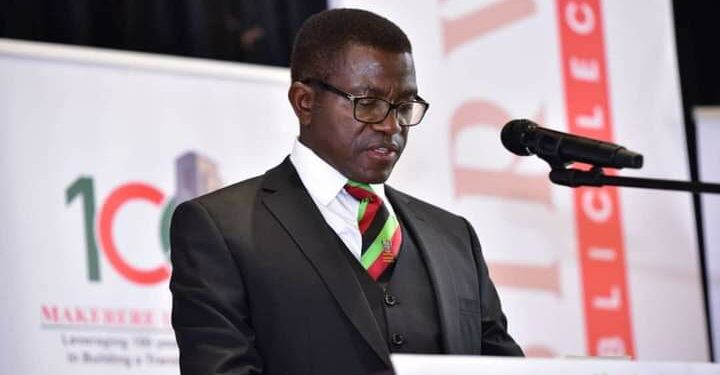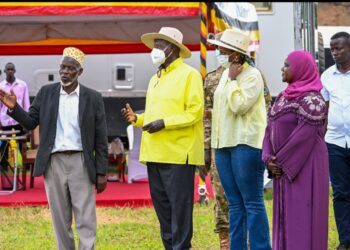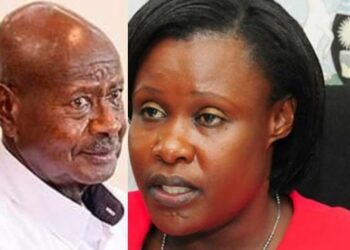Easter sermons and special addresses focused on political-reconciliation, especially concerning opposition members. A sobering warning concerning the rising corruption curve in government agencies was also included.
Charles Peter Mayiga, the notable Katikkiro of Buganda, drew attention to the government’s extravagant spending, especially its abnormally high allocation to Parliament given the size of the nation.
Attending the Easter Sunday service at the Diocese of Kasana-Luweero, Katikkiro Mayiga commented that government spending is out of control and needs to be drastically cut.
“Anyone who regards themselves as patriotic toward our nation would unavoidably wonder why, in a nation of 44 million people, we have a parliament with more than 539 members. I have the utmost regard for our Members of Parliament and their oratory skills, but do we really need that many of them in Parliament—that is, one lawmaker for every 80,000 Ugandans? Katikkiro Mayiga said, “Compare this to India, a country of 1.4 billion people, whose parliament has 630 members, or 2.2 million Indians per legislator.”
Katikkiro continued to reveal that all the elected leaders in Uganda are tantamount to 2 million, he wondered how a poor country like Uganda can manage such huge payments to cater for all those elected officers.
“Parliament is that body that sets its salaries and everything, even the former Speakers of recently received brand new cars, they received money for travel, attending meetings, for medical, I think they even receive money for clothing, they receive money for cars, money for consultation etc, why is that I dont hear people talking about this?” he asked.
Later, he pushed the government to create a separate entity that would be in charge of determining pay for all three branches of the government. This action would lessen the increasing trend of excess, especially in Parliament.
“When the government doesn’t perform as promised, especially when they see wasteful spending, the public will never be satisfied. Uganda, being a financially challenged nation, cannot afford such extravagant expenditures. In some countries, independent authorities set the compensation and daily allowances for all taxpayer-funded employees, including the president and lower-level officials. We wouldn’t be talking about these problems if we had such oversight. Katikiro Mayiga observed, “Instead, it appears that some people put serving themselves first, asking, ‘Why not take the lion’s share when given the opportunity?’”
Katikkiro’s remarks come in the wake of recent proposals by the Secretary to the Treasury, Mr Ramathan Ggoobi, to halve the Parliament’s budget. However, this proposal has sparked discontent among House members, led by the House Speaker, Anita Among, turning into a bitter pill for all to swallow.
The members instead saw the budget cut as “disrespectful, humiliating and demeaning” to the Legislature. Speaker Among wondered how the house was to run its business with such funding cuts. “Our deduction of 50%, shall we be paid salary?” she said. “You even have the courtesy to put it in bold, on a statutory vote that Parliament shouldn’t get money.”
More to that the PSST’s proposal has also come at a time when Parliament is the light of huge luxurious spending by the Speaker, this has also left many Ugandans wondering why the Parliament is given such a huge budget. Among the disturbing questions raised by many analysts is the Speaker’s and his deputy’s budget allocated for corporate social responsibility, an issue many see as unnecessary.
Over the last two months, the social media campaign titled Uganda Parliament Exhibition has highlighted the luxurious spending in Parliament over the last two months. In the exhibition, many weird and insane expenditures have been displayed leaving poor Ugandans in shock.
How did we End up here?
Under Rebecca Aritwala Kadaga’s leadership, the 10th Parliament had a House of over 459 Members, 12 of whom served as ex-officio members. Parliament increased in size from 459 to 514 members during Kadaga’s final term in office as a result of passed resolutions. These resolutions brought in 12 women MPs from newly operating districts between 2018 and 2020, five older parliamentarians, and MPs from newly created constituencies.
The size of Parliament has grown over time, with the largest expansion taking place during the NRM era. It began with 82 members in 1961 and reached 112 in the final general election prior to independence, 120 in the National Consultative Council (NCC), and 126 in 1980.
At least 38 former members of the National Resistance Movement/Army (NRM/A) made up the National Resistance Council (NRC), which functioned as the 5th Parliament. However, it was increased to 270 members after nationwide elections that were held at the district level by electoral colleges. In addition, following the establishment of the districts of Kisoro, Pallisa, Kiboga, and Kibaale in March 1991, four female deputies were added to the House.
With the establishment of Ntungamo District in March 1993, an additional female delegate joined the group, increasing the total to 275 members. The approval of 17 new districts during the 6th Parliament led to a rise in the number of district women MPs from 39 to 59. As a result, there are now 300 MPs overall, up from 283.
The number of Members of Parliament rose to 326 in the 8th Parliament, then to 457 in the 9th Parliament as an additional 49 members were added during that period. The decision of the NRM government to keep such an oversized and mostly ineffectual Parliament has been one of the main critiques levelled against it.
The exponential enlargement of Parliament in an abnormal manner has been mostly caused by political gerrymandering, as the ruling party has persistently looked for votes to support their agendas, which include the elimination of age and term limitations. However, Ugandans are severely burdened by the expense of sustaining such a large Parliament.
Do you have a story in your community or an opinion to share with us: Email us at editorial@watchdoguganda.com














